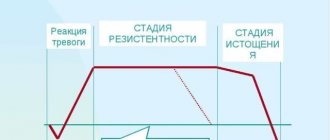How does our ability to think logically and clearly develop? What happens in the child's brain as the child acquires the skills of understanding and awareness of the phenomena of the surrounding reality? In other words, what is hidden behind the process of cognitive development, and what is it even?
Let's take a closer look at this concept and consider the features of the development of thought processes in human beings. In this article we will introduce you to the main phenomena and milestones of cognitive development, as well as to one of the leading theorists in this field - Jean Piaget, and the stages he identifies in this important process.
In this article we will focus on the first two such stages, and in the next article we will continue the topic. There we will also indicate some practical ways and recommendations for parents who would like to help their child with his cognitive development.
So, first let's define what is meant by this term and what factors are important here.
What is cognitive development
The study of cognitive development has made it possible to take a step in understanding the psychological health of children and adolescents.
Thought processes are necessary to interact with the world around us. As they grow older, they improve, which allows the child, and then the teenager, to interact with the external environment. This change, which occurs constantly, is called cognitive development. The criteria for its evaluation are:
- memory;
- perception;
- the ability to think in categories, set goals and achieve them;
- logics;
- imagination.
Features of the development of Jean Piaget
The theory of cognitive development was developed by Jean Piaget, the famous Swiss psychologist and philosopher. It concerns the improving abilities of children from birth to 15 years. The scientist believed that a child’s thinking differs from the mental capabilities of an adult. It's not just about experience and worldly wisdom. The quality of thought processes differs. At the same time, he highlighted the characteristics of children’s intellectual abilities:
- The ability to judge an object or phenomenon based solely on one’s own thoughts and experience. For a child there is no other point of view;
- The tendency to perceive events taking into account only the outcome. Children do not pay attention to intentions, the influence of additional factors, they take into account final manifestations, what they see;
- The habit of animating moving objects, for example, clouds, a train;
- Treat existing objects and phenomena as created by people;
- Lack of logical connection between conclusions.
A child's cognitive intelligence develops through several successive stages. Some abilities replace others and develop. At the same time, the highest degree of perfection is achieved by the age of 15.
Basic concepts of Piaget's theory
- A pattern of action or thought. According to the psychological theory of intelligence by J. Piaget, these are categories of knowledge that determine a person’s understanding and interpretation of the world around him. The schema includes knowledge and the process of obtaining it. When receiving a new experience, the child either acts and thinks according to a scheme already existing in his mind, or modifies it, or replaces it with a qualitatively different one.
- Assimilation. This is the process of incorporating new knowledge into existing patterns. For example, a child knows that there is a dragonfly: an elongated body, fast wings, and can fly. Seeing a helicopter for the first time, he will exclaim: “Mom, look, a dragonfly!” Because a helicopter, by all indications for a child, fits this category: long, fast, flies. That is, he built a new concept into his already existing scheme of thinking.
- Accommodation. This is the process of changing or replacing an existing scheme to suit new conditions. For example, a child can hold a spoon, but in his fist. Adults begin to demand and teach him to do it correctly, placing cutlery between his fingers. The baby gradually has to completely change his pattern of actions: the muscles involved and hand movements change, only the goal remains stable - to bring the spoon to the mouth.
- Balancing. Jean Piaget emphasized that in the child’s psyche a healthy balance must be maintained between the processes of assimilation and accommodation, since when the first predominates, the child’s behavior and thinking becomes rigid, and the second becomes inconsistent and disorganized. The successful intellectual development of a child at all stages of the formation of thinking depends on the balance of assimilation and accommodation.
How to develop cognitive thinking
Development of attention - exercises for training concentration
Note! Cognitive thinking can be developed at any age. New information and the desire to learn new skills will allow you to constantly develop cognitive thinking.
Children's cognitive abilities can be developed in the following ways:
- For the youngest children, games for fine motor skills are suitable, including the use of beads, cereals, and buttons. You can sort through small objects or let your baby pour from one container to another;
- Older children will benefit from puzzles, construction sets, and mosaics, the complexity of which should be increased as they grow older. Drawing, coloring, cutting out are useful. Then you can memorize poems, retell them, compose stories from pictures or based on suggested phrases.
Children putting together a puzzle
The nervous system and its role in child development
The baby’s nervous system regulates the vital functions of the small organism, ensuring the coordinated functioning of the whole organism. Its main function is the integration and regulation of various processes in connection with changes in the internal and environmental conditions of the baby. The improvement of the nervous system is gradual. In pediatrics, there are different periods. Each of these periods is characterized by its own characteristics. There are certain criteria for the formation of a baby in each period, which make it possible to distinguish between normal and pathological conditions.
Stages of personality development in psychology
Development of thinking in an adult and a child - recommendations
Piaget's theory implies the existence of three stages of personality development. Without success at the previous stage, development of the next one is impossible. Each period is characterized by its own way of thinking, the way the child perceives the surrounding reality.
Sensorimotor stage
The sensorimotor stage lasts from birth to two years. The baby begins to explore the world, and the main impressions depend on his perception. He does a lot intuitively, gaining experience and developing abilities. Motor skills improve, and by the end of the period the baby is able to set a goal and move towards its implementation.
Preoperative stage
The preoperative stage continues until the age of six. It is difficult to influence a child’s opinion in childhood; his point of view is perceived as the only correct one.
Accurate images of objects and actions that can be performed on them begin to form. They begin to exist not only in reality, like surrounding objects, but also in the imagination, represented in the internal plane. When examining an object, the child does not pay attention to all its aspects. He concentrates on a single detail, not giving importance to the rest.
Operations stage
The operational stage takes a period of 6 to 11 years. Actions are subject to logic, thoughts are interconnected. The imagination of schoolchildren no longer comes first; reality appears, with which they begin to reckon.
Solving logical problems at this age becomes manageable. But the generalization has not yet been comprehended. The same actions on different objects can be characterized differently. Children of primary school age are trying to solve the same problem again.
Formal Operations Stage
After 11 years, children begin to think abstractly, the ability to reason, define complex concepts, and make logical conclusions appears. In youth, there is a certain life experience that allows you to analyze what is happening and draw conclusions. The period lasts up to 15 years.
Egocentrism and decentration according to Piaget
Jean Piaget: mental development of the child. Thanks to the clinical method, Piaget established that egocentrism is a peculiarity of children's logic, children's ideas and children's speech. At some stages, the child views objects as he sees them, without seeing their internal relationships. The sun follows him. Piaget called this realism. Children up to a certain age cannot distinguish the subjective world from the objective. Realism can be intellectual and moral. The branches of a tree make the wind is intellectual realism, while moral realism does not take into account internal intentions. Children's ideas develop from realism to objectivity.
Decentration is a better position. The transition from egocentrism to decentration is characterized by cognition at all levels of development. He called this process the law of development. In order for the transition to occur, a special tool is needed. He believed that it was a progressively developing self-awareness, the development of self-knowledge arising from social interactions. To realize your Self, you need to free yourself from compulsion.
Exercises to develop cognitive thinking
Development of intelligence - how you can improve your mental abilities
Some simple exercises will help develop cognitive abilities not only for children, but also for adults:
- pronounce heard words backwards;
- use oral counting;
- remember the events that happened during the day or return in memory to the long past, maintaining chronology;
- try to look for a new route when getting to your usual place;
- Use your weak hand to perform daily activities, such as writing or brushing your teeth with your left hand (for right-handed people);
- visualize information that needs to be retained in memory;
- draw with both hands at the same time.
Example exercise
Important! Following the exercises will help achieve a temporary effect. To develop and increase the effectiveness of cognitive abilities, regular training is necessary.
Assessment of psychomotor and speech development of infants and toddlers (developmental assessment)
In essence, the emergence of a particular skill in a baby is the formation of an acquired reflex. And it can be formed only after the brain structure responsible for this reflex has matured. No structure - no skill. That is why pediatricians can assess the degree of maturation of various parts of the brain by the presence or absence of relevant skills.
The emergence of a particular skill in a baby is the formation of an acquired reflex.
You can evaluate the psychomotor and speech education of a baby at home. To do this, we present below the main points when assessing psychomotor and speech education, and also indicate the average time for the appearance of a particular skill in healthy children:
Motor - static:
- Holds head (2 months);
- Rolling onto the stomach from a supine position (4-5 months);
- Rolling onto your back from a prone position (5-6 months);
- Sitting (6 months);
- Crawling (7-8 months);
- Standing with support (8-9 months);
- Stands on its own (10-11 months);
- Walks with hand support (10-11 months);
- Walks on his own (12 months).
Purposeful motor activity:
- Grasping an object and simple manipulations with it (5-6 months);
- Shifting an object in one's hands, reaching out to loved ones, clapping one's hands (7-8 months);
- Plays primitively (9-10 months);
- Various activities with toys, contact with peers (11-12 months).
Visual analyzer:
- Fixes the gaze (2 weeks);
- Watches for shiny, colorful toys (3 weeks);
- Carefully examines various objects, toys (4-5 months);
- Recognizes relatives and familiar faces (6-7 months);
- Observes parents, reacts to facial expressions (9-10 months);
- Recognizes many objects from pictures (11-12 months).
Hearing analyzer:
- Positive reaction to the voice of loved ones (2-3 months);
- Recognition and response to the voices of loved ones, reactions to voice intonations (4-6 months);
- Understanding speech addressed to him (9 months);
- Following fairly simple verbal instructions (10 months).
Speech:
- Walking – pronouncing vowels (2 months);
- Flute – pronouncing different sounds with different tonality (4 months);
- Pronunciation of syllables - babble (7-8 months);
- Pronunciation of words (9-10 months);
- Linking several words into phrases (18-20 months);
- Verbose phrases (3 years);
- Long phrases, monologues (4-5 years).
Using these methods, the pediatrician evaluates development.
This is how a pediatrician evaluates development. Communicating with parents, he finds out at what age certain skills appeared. The survey of parents is carried out according to the specified scheme. In this way, it becomes clear how the baby was improving until the moment of examination. During the examination, the doctor evaluates what the patient can do. Then, based on the data obtained during a survey of parents and examination of the baby, the doctor assesses the development of the baby at the time of examination. Educational assessment is carried out within certain epicrisis periods:
- Monthly during the first year of life.
- From 1 year to 3 years with an interval of 3 months.
- From 3 to 7 years with an interval of 6 months.
- Over 7 years old at 1 year intervals.
Reasons for criticism of Piaget's concept
Piaget in his studies did not pay attention to such a component as the social status of children. He considered this factor to be insignificant and believed that the transition from one stage of development to another occurs automatically. Meanwhile, the children whose abilities he studied belonged to fairly prosperous families with a stable income and respect in society.
Note! Piaget paid little attention to sociology, not concentrating on the relationship between children and parents. Therefore, it is impossible to generalize the results of his research to any child. Many psychologists believe that social status greatly influences mental development.
It is noted that Piaget delayed the period before the start of operations, allocating him a long time period. Children at an earlier age are able to think in abstract categories and draw conclusions from accumulated knowledge.
Piaget considered formal logical thinking to be the highest degree of intellectual development. Its peak occurs in adolescence, at the age of 15. This means that a teenager studying at school is able to find a solution to a certain problem no worse and no slower than a wise manager of a large company. But this applies only to a certain range of issues, when life experience and skills do not imply knowledge of human nature, but only the presence of logic and the ability to perform actions with objects and phenomena.
Thinking in action
Despite the imperfections of Piaget's theory, it served as the foundation for many professional studies concerning the mental development of children and gave impetus to the emergence of new views on the mechanism of cognitive thinking.
Currently, many exercises have been developed for children and adults aimed at improving intellectual abilities. You can also check your mental level of development and determine areas for work. Constant training and a healthy lifestyle will help keep your memory and mind in good shape for many years.
Criticism of the teaching
Jean Piaget's theory was distinguished by its fundamentality and novelty. Nevertheless, there were many experts who criticized his approach. The psychologist was condemned for using only children from families with high social status in his experiments. The scientist almost did not take into account the influence of environmental factors. It is obvious that the intelligence of children from disadvantaged families develops according to a different scenario.
Some critics wrote that Piaget underestimated the thinking of 5-year-old children. Their level of intelligence is often less egocentric than the psychologist believed. Moreover, the age at which an individual reaches the stage of formal operations is always different. Despite criticism, Jean Piaget's ideas served as the basis for other theories about personality development.
Other methods for studying the level of development of young children
It is worth noting that the above-described method of assessing training is screening (quick, superficial). It allows you to examine a large number of children at once. If learning disabilities are identified, the patient needs a more in-depth examination and consultation with specialists such as a neurologist, psychologist, etc.
Along with this technique, in 2006 the World Health Organization proposed the use of the so-called “Windows of Achievement for 6 stages of motor development.” The disadvantage of this technique is that the level of speech formation, emotional and sensory formation of the baby is not taken into account and ignored. There are other methods that allow you to assess psychomotor education. One of the promising foreign methods is the Griffiths Mental Development Scale. Centile graphs, which are quite easy to use, have also become widely used for assessing learning.
Possibilities of regulating cognitive function in children using vitamin-mineral complexes
Despite the growing well-being of the population of the Russian Federation, the problem of year-round polyhypovitaminosis in children is quite acute. A decrease in the amount of food entering the body due to changes in a person’s lifestyle, the consumption of refined foods, shelf-stable products, and foods that have undergone long-term culinary processing makes it impossible to replenish the required amount of essential micronutrients only with the help of a balanced diet. Studies of vitamin and mineral status in children conducted in recent years show that ascorbic acid deficiency among the child population reaches 70–95%; 60–80% of children have an insufficient supply of thiamine, riboflavin, pyridoxine, niacin and folic acid [1]. Cognitive function is a complex and incompletely understood phenomenon. However, a number of studies have been conducted to assess certain cognitive functions, such as memory and reproduction, mental acuity and the ability to concentrate, the ability to learn and solve problems, the ability to mobilize and the speed of the thinking process, which has allowed us to establish a clear relationship with the provision of the child’s body with certain micronutrients. Development of the human brain The main growth of the brain and the peak development of synapses occur from the 34th week. pregnancy up to 2 years of life, by preschool age synaptic density reaches the level of the adult brain. Myelination of some areas of the brain that control higher cognitive functions continues into adolescence. Research has shown that the maturation of specific brain regions during childhood is associated with the development of specific cognitive functions. Development of the frontal lobes of the brain, responsible for higher cognitive functions, appears to occur in bursts: during the first 2 years of life, between 7 and 9 years, and at 15 years. Development of several subcortical structures, including the basal ganglia, amygdala, and hippocampus, continues into late adolescence. In addition, a meta-analysis confirmed the relationship between hippocampal size and memory subsystem performance during brain development in children and young adults. Diet has been shown to have a direct effect on gene expression in animal and human studies. One of the first studies, Nutritional Epigenomics, showed that offspring of mothers who starved during the wartime 1940s had an increased risk of developing cardiovascular disease, kidney and lung damage, metabolic disorders, decreased cognitive function and DNA hypo- and hypermethylation segments. Folic acid deficiency during neural tube closure between days 21 and 28 after conception is known to predispose to fetal malformations. During the first 2 years of life, the brain grows rapidly, reaching 80% of its adult weight. During this period of life, nervous tissue can be especially sensitive to nutritional deficiencies. During adolescence, structural changes in the brain and cognitive maturation occur, in particular, major events in the prefrontal cortex [2]. The influence of micronutrients on cognitive functions Omega-3 PUFAs are an important structural component of the gray matter of the brain, which, according to some scientists, is responsible for the development of intelligence in the body. Omega-3 PUFAs are also necessary for the proper functioning of the retina. Sufficient Omega-3 content in food largely determines the child’s mental abilities, the correct development of fine motor skills and motor-visual coordination. Omega-3 PUFAs are essential for the normal functioning of cells in the human body; they are not synthesized in the body and must come from outside with food. The main and most studied members of the Omega-3 PUFA family are eicosapentaenoic acid (EPA) and docosahexaenoic acid (DHA). The main role of omega-3 PUFAs is to ensure the functioning of cell membranes, transmembrane ion channels and the regulation of physiological processes through the synthesis of lipid mediators. EPA and DHA are embedded in the phospholipid layer of cell membranes and affect their fluidity, changing basic functions such as enzymatic activity, impulse transmission and receptor function. Essential fatty acids promote neuronal growth and synapse formation, therefore influence signal transmission and processing, and also regulate gene expression in the brain. A number of epidemiological studies have shown a positive association between consumption of fish, a source of omega-3 fatty acids, during pregnancy and children's cognitive development. Early research found that eating fish during pregnancy was associated with better speech and social skills. The ALSPAC study found that children whose mothers consumed little seafood during pregnancy had lower IQ at age 8, minor behavioral problems at age 7, and poorer development of fine motor skills, language, and social behavior at ages 6, 18, and 30. and 42 months A Danish national cohort study of 25,446 children aged 6 months and 18 months demonstrated that maternal fish consumption was beneficial for children's mental development, even after adjusting for other factors such as breastfeeding, sociodemographic characteristics and others. Two studies of Inuit children in Arctic Canada found that higher levels of DHA in umbilical cord blood were associated with improved cognitive function and school performance [2]. The source of PUFAs are food products, which for a number of reasons are rarely included in the diet of people living in our country: some varieties of marine fish (salmon, tuna, sardine, mackerel), vegetable oils (rarely consumed rapeseed and soybean), nuts , some types of fruits. In this regard, there is a need for additional intake of omega-3 PUFAs in the form of biologically active food additives. Deficiency of omega-3 PUFAs makes a significant contribution to the increased risk of a child developing attention deficit hyperactivity disorder (ADHD). Evidence suggests that dietary supplementation with omega-3 PUFAs helps compensate for behavioral problems and learning difficulties in patients with ADHD [3–5]. The existence of a relationship between omega-3 PUFA deficiency and the risk of ADHD is confirmed not only by clinical, but also by experimental data. Firstly, limiting the diet of animals with omega-3 PUFAs leads to an increase in hyperactivity and a decrease in cognitive abilities in the offspring. Secondly, animal studies have shown an association between omega-3 PUFA deficiency and abnormalities in dopamine metabolism. Third, clinical observations indicate decreased levels of omega-3 fatty acids in patients with ADHD. Finally, biochemical data indicate the role of omega-3 PUFA deficiency in the formation of behavioral disorders through disruption of dopamine metabolism in the basal ganglia [6]. Of particular interest is the study of electromagnetic activity of the brain depending on the intake of omega-3 PUFAs. Children (n=33) aged 8–10 years received placebo, moderate dose DHA (400 mcg/day), or high dose DHA (1200 mg/day) for 8 weeks. Relative changes in the cerebral cortex during attention tests were determined using functional magnetic resonance imaging. At the 8th week. the DHA content in erythrocyte membranes increased by 47% in the group with a medium dose of DHA and by 70% in the group with a high dose of PUFAs. In the placebo group, DHA levels dropped by 11%. During attention tests, both DHA groups showed significantly greater changes from baseline in dorsolateral prefrontal cortex activation than the placebo group. The higher the dose of DHA, the greater the decrease in cerebellar activation, which corresponded to a decrease in hyperactivity. RBC DHA content was positively correlated with the degree of activation of the dorsolateral prefrontal cortex (improved behavioral control) and shorter reaction time [7]. Clinical observations confirm the results of basic research and indicate a clear relationship between omega-3 PUFA deficiency and the risk of ADHD. Children with ADHD had significantly lower levels of DHA PUFA and total omega-3 fatty acids in the blood [8]. Choline. Of great importance for the formation of mnestic functions in a child is a vitamin-like substance - choline, which has membrane-protective, anti-atherosclerotic, nootropic and sedative effects. In the form of acetylcholine (a compound of choline and acetic acid ester), choline is a transmitter of impulses in the nervous system. Choline is necessary for the normal functioning of the nervous system; it is part of the myelin protective sheath of the nerves, protecting the human brain throughout life. It is believed that the level of intelligence largely depends on how much choline we received in the womb and during the first 5 years of life. Vitamin B4 restores liver tissue damaged by toxic drugs, viruses, alcohol and drugs. It prevents the development of gallstone disease and improves liver function. Choline normalizes fat metabolism, stimulating the breakdown of fats, and helps absorb fat-soluble vitamins (A, D, E, K). Lack of choline in children leads to irritability, increased fatigue, and nervous breakdowns. Choline is a component of lecithin, a substance very important for brain tissue. Lecithin (a mixture of phospholipids) belongs to the group of essential nutritional components. Lecithin deficiency is a serious problem for child health. Lecithin is a mixture of phospholipids: choline, inositol and phosphatides. Essential fatty acids and phospholipids, being the structural units of all cell membranes, restore the barrier and metabolic functions of cells, ensure the entry of nutrients into the cell and the removal of waste products from it. Phosphatidylcholine promotes the emulsification of dietary fats and increases the absorption of fat-soluble vitamins A, D, E in the digestive tract. Manifestations of lecithin deficiency in children are quite diverse and variable. In children of the first years of life, due to lecithin deficiency, intracranial hypertension may occur, delayed psychomotor and speech development, behavioral disorders (psycho-emotional imbalance), decreased ability to concentrate, and memory impairment [9]. Classic manifestations of lecithin deficiency in children include disorders of neuropsychic development (decreased functionality of the central nervous system, increased irritability, tearfulness, etc.), disorders of cognitive functions (decrease in memory parameters, attention, thinking, academic performance), decreased motor activity (fatigue and increased fatigue), etc. Researchers from the USA have demonstrated that lecithin has the ability to improve the so-called “brain chemical activity”, having a beneficial effect on higher cortical (cognitive) functions such as memory, speech and motor skills. Subsequently, this allowed A. Barbeau (1978) to highlight the problem of using lecithin for the treatment of neurological diseases (Friedreich's ataxia, Huntington's chorea, etc.) [10]. Since the 1980s. A number of works have appeared in the medical literature on the use of lecithin for various cognitive impairments, memory disorders, as well as in the treatment of dementia of the Alzheimer’s type [11]. Domestic experts reported the possibility of effective use of lecithin in other types of psychoneurological pathology in children and adolescents, including early childhood autism (ECA), psychomotor development delay (PDMR), Gilles de la Tourette syndrome, asthenoneurotic reactions, depressive neurosis, Meniere's disease, epilepsy and etc. It is assumed that lecithin, which is part of the myelin sheaths covering nerve fibers, can in some cases ensure the onset of remission in multiple sclerosis (MS), which often occurs in childhood (up to 18 years) [12]. Synergy between micronutrients and vitamins. Vitamins for children Supradin Kids It is well known that vitamins are nutrients, their use (vitamin prophylaxis and vitamin therapy) is an integral part of neurodietology. The combination of vitamin or vitamin-mineral complexes with biologically active substances (omega-3 PUFAs, lecithin, choline) reflects a progressive way to optimize nervous functions, somatic health and vitamin provision of children. Ascorbic acid helps increase the body's resistance to stress and helps to successfully cope with its consequences. This substance is of great importance in the synthesis of hormones responsible for the stability and adaptation of the body to changing environmental conditions. Vitamin C helps activate thinking processes and is used by the body in the production of neurotransmitters and nerve cells. The combination of polyunsaturated fatty acids with antioxidant vitamins C and E allows you to prevent damage to the active component by oxidative processes and achieve maximum absorption. In recent years, there has been increased interest in the relationship between vitamin B12, folic acid and choline metabolism and cognitive development. Folic acid affects neuronal cell proliferation and differentiation of stem cells, slows down apoptosis, modifies DNA biosynthesis, and plays an important role in the biosynthesis of homocysteine and S-adenosylmethionine. Choline is thought to serve a similar role in brain development. S-adenosylmethionine is considered the main donor of methyl groups in various metabolic methylation reactions. Thus, choline and folic acid deficiency can lead to DNA hypomethylation, altering gene transcription. In addition, choline is a component of cell membrane phospholipids and a precursor to the neurotransmitter acetylcholine. Vitamin B12 plays an important role in axonal myelination and also protects neurons from degeneration. The synergism of the components makes it most effective to use rationally formulated vitamin-mineral complexes for children, rather than individual monocomponents. Supradin Kids Gel is intended for use in children aged three years and older. Contains B vitamins (B1, B2, B6), niacin, pantothenic acid, antioxidant vitamins (beta-carotene, C, E), vitamin D3. Beta-carotene is the most common and most effective provitamin A. Theoretically, one molecule of beta-carotene can be broken down into two molecules of vitamin A. However, in the body, beta-carotene is only partially converted into vitamin A, and the rest accumulates unchanged. Moreover, the proportion of beta-carotene converted into vitamin A in the body is controlled by vitamin A status, thereby avoiding toxicity caused by excess vitamin A in the body. It is a known fact that beta-carotene is not soluble in water, and its oil solutions have a very low concentration (no more than 0.1%). Therefore, the absorption of beta-carotene from tablet preparations and oil solutions significantly depends on the fat content in the diet and the state of the digestive system. The combination with lecithin significantly increases the bioavailability of beta-carotene. The use of beta-carotene in frequently ill children, along with a dose-dependent clinical effect, leads to an immunomodulatory effect, which manifests itself in a decrease in the level of T-lymphocytes and serum immunoglobulin A when stimulating the functional activity of phagocytic cells in peripheral blood [13]. Supradin Kids with Omega-3 and choline are sweet marmalade candies in the shape of fish and stars, which are intended for children from 3 years old. This is a multivitamin complex that contains Omega-3 and choline. In addition, cyanocobalamin is added to the complex. The presence of this vitamin in the complex is especially important for children following various types of diets. Supradin Kids Junior are sweet, colorful chewable tablets intended for children over 5 years old. Compared to the previous form, they additionally contain calcium, magnesium, choline, iron, zinc, manganese, cyanocobalamin, copper, folic acid, selenium, iodine, biotin, chromium. Microelements have high biological activity and participate in the basic redox processes of the body, various types of metabolism (protein, fat, carbohydrate, vitamin, mineral), gas exchange, heat exchange, tissue respiration, tissue permeability, immunobiological reactions. Taking part in these processes, trace elements are not limited to any one function. Zinc not only is related to the activity of the sex glands, but also affects protein, fat, carbohydrate and mineral metabolism. Copper and iron are involved in redox processes, and are also associated with the function of hematopoiesis. Iodine has a multilateral effect on the body. Iron was found in the body as part of more than 70 of enzymes and proteins different in its function. The disadvantage of iron in the body has a completely defined characteristic clinical picture: hypochromic anemia, myoglobindic atonia of skeletal muscles, increased fatigue and slight excitability, headaches, dizziness, depression, myoglobindic disadvantage of myocardiopathy, heart, atrophic glossitis, givinginuria. Copper takes part in nitrogen metabolism, part of the nitratedreductal complex. In the body - participates in processes that provide tissues with oxygen: the formation of hemoglobin and the formation of red blood cells. Copper is part of the ceruloplasmine of animals and humans, is the cofactor of enzymes of cytochromoxidase, polyphenol, di-, amino and ascorbinoxidase. Copper induces the formation of a superoxide ion-radical, which, in a reaction with hydrogen peroxide in the presence of trivalent iron, generates hydroxide radicals that go to the breakdown of pathological elements-detritus, inflammation products that mutated cells. Copper is involved in many physiological and pathological processes of the body and is contained in the mitochondria and microsomas (breathing, detoxification, gender reaction, oxidation of lysine and ascorbic acid-with excess of the latter there is a shortage of copper). Copper takes part in the synthesis of collagen and elastin, hemoglobin. The content of copper is very important for the function of vitamins A, E, P, PP, C, as well as stabilization of thiol groups. Copper provides the functioning of the desalation enzyme, which translates stearic acid into oleic and other polyunsaturated fatty acids. With a deficiency of copper, dysplasia of connective tissue, neurodegeneration and hypomoylinization of the brain and spinal cord, hypochromic anemia, and eczema develop. Selenium stimulates immunity in our body, is an antioxidant and has a protective effect on cytoplasmic membranes, preventing their damage and genetic disorders. It contributes to the normal development of the cell. Selenium, along with cobalt and magnesium, is a factor that counteracts a violation of the chromosomal apparatus. Selena ions activate mitochondria and microsomas, glutation-reductase, glutathione-peroxidase, cytochrome P450, participate in the synthesis of glycogen, ATP, the transmission of electrons from hemoglobin to oxygen, support the work of α-tocopherols, are an antidote against the transmission of electrons. heavy metals, including Mercury, silver, cadmium. Selenium deficiency occurs not only for low intake, but also with chronic intoxication with heavy metals, liver diseases, as well as in the treatment of phenylketonuria by parenteral and semi -synthetic nutrition. Currently, zinc has been identified in almost 200 enzymes that determine the course of various metabolic processes, including the synthesis and decay of carbohydrates, fats, proteins and nucleic acids. It has been established that zinc affects the function of the genetic apparatus, growth and division of cells, osteogenesis, keratogenesis, takes part in a non -immemed answer, affects the production of behavioral reflexes, and brain development [14]. Iodine plays an active role in the biosynthesis of hormones. He participates in the formation of thyroid hormones - thyroxine and triiodothyronine. Up to 90% of organic iodine circulating in the blood falls on the share of thyroxine. This hormone controls the state of energy metabolism, the intensity of the main metabolism and the level of heat production. It actively affects the physical and mental development, differentiation and maturation of tissues, is involved in the regulation of the functional state of the central nervous system and the emotional tone of a person. In addition to severe forms of mental retardation, iodine deficiency determines a decrease in the intellectual potential of the entire population living in the zone of iodine failure. Studies performed in recent years in different countries of the world have shown that the average indicators of the mental development of the population (IQ index) living in the regions of iodine deficiency, significantly (15–20%) lower than those in the regions without iodine deficiency. Supradin Kids Mishka - marmalade cubs, are intended for children from 11 years old. This complex contains vitamins in doses recommended for school -age children, and is a basic complex for the prevention of various pathological conditions. The composition of the complex includes: vitamins A, C, D3, B6, B12, Nicotinamide, Biotin, Folic acid, vitamin E. Dosage mode of vitamin-mineral complexes of the Supradin line is presented in table 1. The conclusion if the child does not receive the necessary set nutrients, a mechanism is activated that increases the level of activity of a number of hormones, in particular cortisol, which leads the nervous system to a state of excitation, which prevents the normal assimilation of the educational material. In children, especially for early school age, the mechanisms of self -regulation and compensation are not fully developed, as a result, the child feels tired or, conversely, tense and nervous, which leads to problems with performance and behavior, depletion of adaptive reserves. Different forms of vitamin complex of Supradin KIDS contain vitamins, macro- and trace elements in doses in accordance with the age-related dietary daily need of the child's body. The developed marmalade forms contribute to the development of an independent desire for a healthy lifestyle in the child and increase compliance. The components of this vitamin complex not only strengthen the child’s health, but also improve cognitive functions - memory and attention. Literature 1. Shikh E.V., Ilyenko L.I. Clinical and farmacological aspects of the use of vitamin-mineral complexes in pediatrics: Textbook. M.: Publishing House Medical Practice-M, 2008. 96 p. 2. Anett Nyaradi, Jianghong Li, Siobhan Hickling et al. The Role of Nutrition in Children's Neurocognitive Development, From Pregnancy Through Childhold // Frontiers in Human Neuroscience. 2013. March 26. 3. Germano M., Meleo D., Montorfano G. et al. Plasma, Red Blood Cells Phospholipids and Clinical Evalving afterga Omega-3 Supplement in Children with Attend Hyperaactivity Disorder (ADHD) // Nutr. Neurosci. 2007. Vol. 10 (1–2). P. 1–9. 4. Liu PJ, Ma F. PolyunsatUrated Fatty Acids and Attendation-Deficit Hyperaactivity Disorder // Zhongguo Dang Dai Er Ke Za Zhi. 2009. Vol. 11 (9). P. 783–785. J. Pediatr. 2010. Vol. 169 (2). P. 149–164. 6. Gromova O.A., Torshin I.Yu., Egorova E.Yu. Omega-3 PNSK and cognitive development of children // Pediatrics, practical medicine. 05 (11). 7. Mcnamara Rk, Able J., Jandacek R. et al. Docosahexaenoic Acid Supplementation Incresses Prefrontal Cortex Activity Sustained Attenation in Healthy Boys: A Placebo-Controlled, Dose-Ranging, Functional Magnet IC Resonance Imaging Study // Am. J. Clin. Nutr. 2010. Vol. 91 (4). P. 1060–1067. 8. Spahis S., Vanasse M., Belanger Sa et al. Lipid Profile, Fatty Acid Composition and Pro-and Anti-Oxidant Status in Pediatric Patients with Attendation-Deficit/Hyperaactivity Disorder // Prostaglandins Leukot. Essent. Fatty Acids. 2008. Vol. 79 (1–2). P. 47–53. 9. Barbeau A. Lecithin in Neurological Conditions // N. English. J. Med. 1978. Vol. 299. P. 200–201. 10. Barbeau A. Emering Treatments: Replaceement Therapy with Choline or Lecithin in Neurological Diseases // Can. J. 11. Studenikin V.M., Balkanskaya S.V., Silkovsky V.I. The influence of lecithin on the neurological status of children // attending physician. 12. Studenikin V.M. Polyvitamin preparation with lecithin: use in children's neurology // attending physician. 2003. No. 6. S. 56–57. 13. Plaksin V.A. The effect of synthetic beta-carotene on clinical and immunological parameters of often sick children: abstract. dis. . Ph.D. honey. Sci. Arkhangelsk, 1998. 14. Blinkov I.L., Starodubtsev A.K., Suleimanov S.Sh., Shikh E.V. Microelements. Brief clinical encyclopedia. Khabarovsk, 2004, S. 211.











